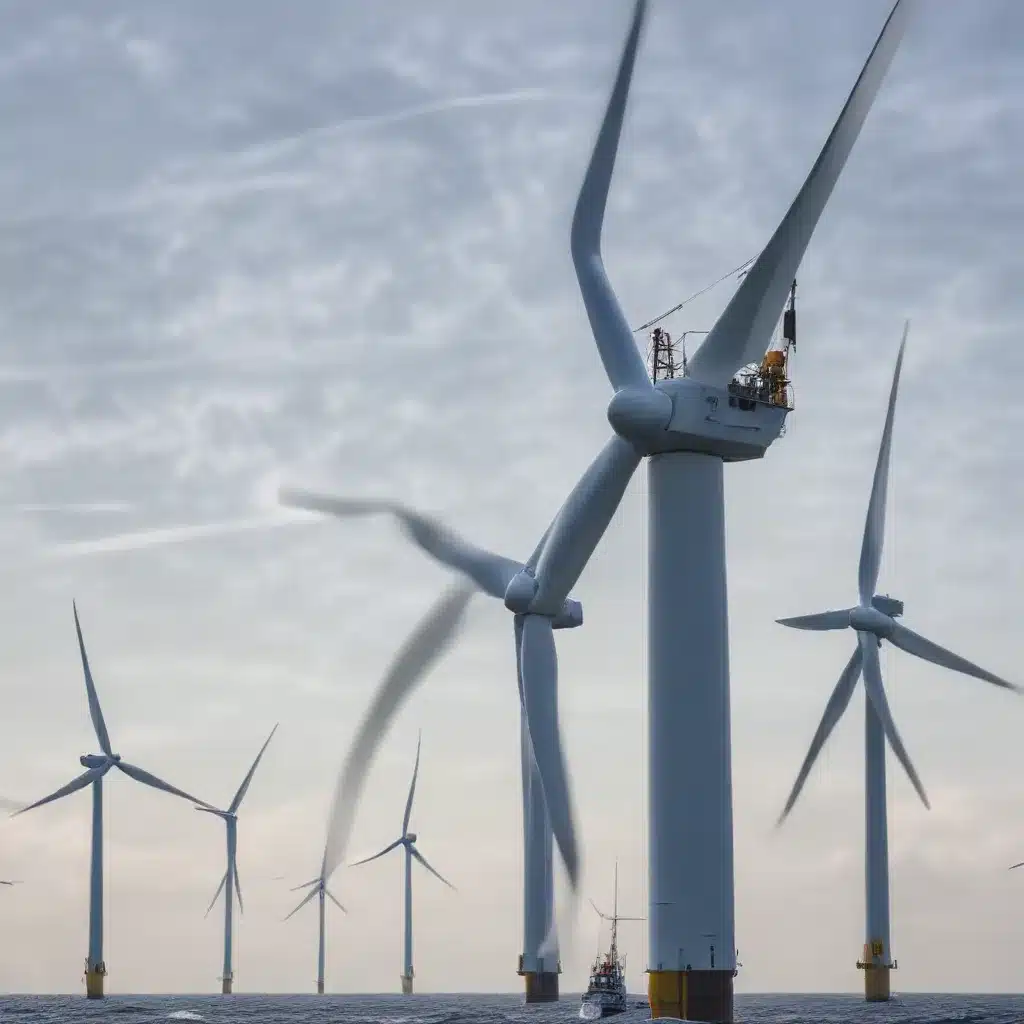
Harnessing the Winds of Change: Innovative Offshore Wind Solutions in Europe
As the world accelerates its transition to a sustainable energy future, Europe has emerged as a global leader in unlocking the immense potential of offshore wind power. With ambitious renewable energy targets and a steadfast commitment to decarbonization, the continent is pioneering innovative technologies and policy frameworks to harness the power of the wind and deliver clean, reliable electricity to millions of homes and businesses.
Emerging Offshore Wind Technologies
The offshore wind energy landscape in Europe is undergoing a transformative shift, driven by rapid advancements in turbine design and grid integration solutions. Floating offshore wind platforms, once considered a distant dream, have now become a reality, enabling the exploitation of deeper waters with stronger, more consistent winds. Projects like the Hywind Scotland, the world’s first floating wind farm, have demonstrated the viability of this technology and paved the way for larger-scale deployments across the continent.
Alongside the rise of floating platforms, the European offshore wind industry has witnessed remarkable progress in turbine technology. The latest generation of wind turbines boasts impressive rotor diameters exceeding 150 meters and hub heights of over 100 meters, enabling them to capture more wind energy at lower wind speeds. These larger, more efficient turbines are particularly well-suited for the diverse wind regimes encountered in European waters, from the North Sea to the Mediterranean.
Grid Integration and Infrastructure
The integration of offshore wind into Europe’s electricity grid has emerged as a critical challenge, but one that is being addressed through innovative solutions. Grid operators are investing heavily in upgrading and expanding transmission networks to accommodate the growing influx of renewable energy, including the deployment of high-voltage direct current (HVDC) cables to transmit power over long distances with minimal losses.
Moreover, the development of energy storage technologies, such as battery systems and pumped-hydro storage, is playing a pivotal role in enhancing the grid flexibility and resilience required to integrate large-scale offshore wind farms. By storing excess electricity generated during periods of high wind, these storage solutions can help smooth out the intermittency of wind power and ensure a steady and reliable supply of energy to the grid.
Regulatory and Policy Frameworks
The European Union’s ambitious renewable energy targets, embodied in directives such as the Renewable Energy Directive and the European Green Deal, have provided a robust policy framework to drive the expansion of offshore wind. Member states have responded with a range of national incentives and initiatives, including feed-in tariffs, auction-based procurement schemes, and streamlined permitting processes, all aimed at accelerating the deployment of offshore wind projects.
These regulatory frameworks have not only spurred investment in offshore wind but have also encouraged cross-border collaboration and knowledge-sharing among European nations. Initiatives like the North Seas Energy Cooperation, which brings together countries surrounding the North Sea, are facilitating the development of harmonized standards, joint planning, and coordinated grid infrastructure to harness the region’s vast offshore wind resources.
Environmental Considerations
As the offshore wind industry flourishes, there is a growing emphasis on ensuring the environmental sustainability of these projects. Rigorous environmental impact assessments are conducted to evaluate the potential effects on marine ecosystems, with a particular focus on mitigating the disruption to local wildlife, including seabirds, marine mammals, and benthic organisms.
Innovative monitoring and mitigation strategies, such as the use of radar systems to detect and divert birds away from wind farm areas, are being deployed to minimize the ecological footprint of offshore wind developments. Additionally, the industry is exploring ways to address concerns over underwater noise and visual pollution, ensuring that offshore wind farms coexist harmoniously with coastal communities and the surrounding natural environment.
Economic Drivers and Challenges
The economic viability of offshore wind has undergone a remarkable transformation in recent years, driven by a combination of technological advancements, economies of scale, and strategic policy interventions. The levelized cost of electricity (LCOE) for offshore wind has declined significantly, placing it on a par with or even below the cost of conventional fossil fuel-based power generation in many European markets.
To further drive down costs, the industry is exploring innovative financing mechanisms, such as green bonds and public-private partnerships, to mobilize the necessary capital for large-scale offshore wind projects. Additionally, the development of a robust domestic supply chain, including the localization of manufacturing and the upskilling of the workforce, is crucial to ensuring the long-term sustainability and competitiveness of the European offshore wind sector.
Stakeholder Collaboration
The transition to a renewable energy future in Europe requires the concerted efforts of a diverse range of stakeholders, from policymakers and industry leaders to academic institutions and local communities. Innovative public-private partnerships are emerging, fostering close collaboration between government agencies, research centers, and companies to address the technological, regulatory, and social challenges associated with offshore wind deployment.
These collaborative initiatives are not only advancing the technical capabilities of the industry but also cultivating a skilled workforce and fostering meaningful engagement with local communities. By ensuring that the benefits of offshore wind development are equitably distributed and that the concerns of all stakeholders are addressed, the industry is building a foundation of trust and social acceptance that is essential for the long-term success of the sector.
As Europe continues to harness the power of the winds of change, the offshore wind industry is poised to play a pivotal role in the continent’s journey towards a sustainable, low-carbon future. Through the convergence of cutting-edge technologies, supportive policy frameworks, and collaborative stakeholder engagement, the offshore wind sector is set to power the homes and businesses of millions, ushering in a new era of clean, reliable, and affordable energy for generations to come.






